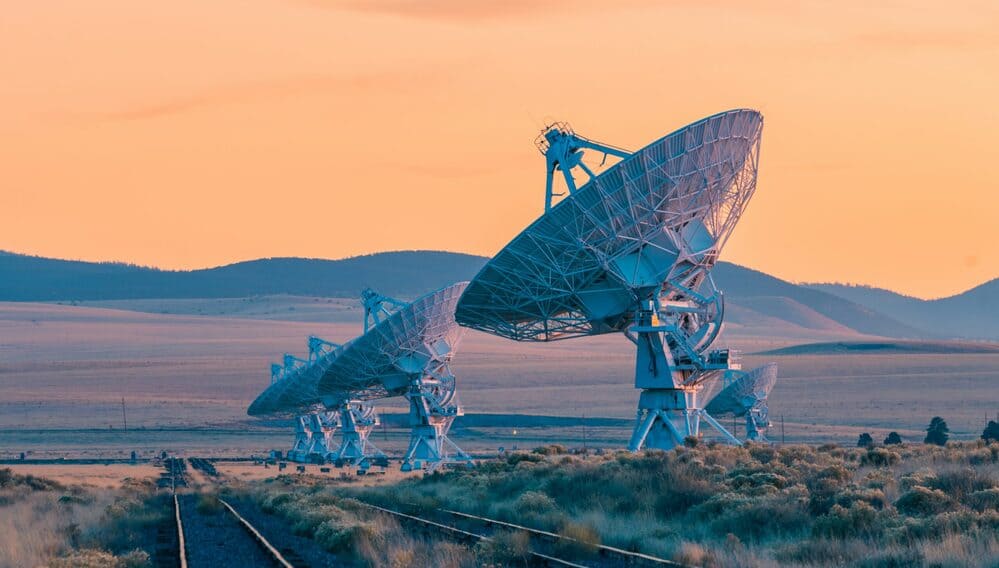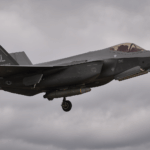WASHINGTON — The Chinese spacecraft Shijian-21 and Shijian-25 have come within docking range high over the equator twice this month, and data suggest a third close pass is hours away. According to industry sources, the two satellites occupy nearly identical geostationary slots and have matched speed, altitude, and longitude with meter-level precision. Defense officials confirm that the U.S. Space Force is watching the pair and that two American surveillance craft, USA 270 and USA 271, now bracket the Chinese duo from the east and west. Our analysis shows Beijing may be ready to attempt the first satellite-to-satellite refueling ever seen in orbit.
Shijian-25 lifted off on Jan. 7 aboard a Long March 3B. Chinese press releases described the newcomer as a “life-extension technology demonstrator.” They did not hide its main goal: transfer propellant to aging platforms. Shijian-21 has the right pedigree for that test. Launched in 2021, it spent much of 2022 towing a dead BeiDou navigation satellite into a disposal orbit and is believed to have burned most of its own fuel in the process. The two vehicles now hover roughly 22,236 miles above Earth, dead-center in the commercial communications belt. If Shijian-25 tops off Shijian-21’s tanks, China will prove it can stretch the life of billion-dollar assets without another costly launch.
Chinese Satellites Shijian-21 and Shijian-25 in Orbital Refueling Demonstrations
Slingshot Aerospace first reported an ultra-close approach on June 13. Optical telescopes in Spain and Australia tracked the pair for twelve hours and lost the light curves in the final minutes, a sign that the objects’ reflections overlapped. COMSPOC later released independent astrometric data that put minimum separation at “well under one kilometer.” Both firms assessed the encounter as a controlled rendezvous. They did not confirm a hard dock. The satellites parted on June 14 but have been drifting back together at a slow 0.05 degrees per day, a textbook way to minimize fuel before another try.
Defense officials confirm the U.S. Space Force labeled the event “priority watch.” Sensors in the Geosynchronous Space Situational Awareness Program recorded each burn and forwarded the information to U.S. Space Command. The American payloads remain silent, yet orbital elements show that USA 270 and USA 271 performed mirror-image maneuvers on June 17 to keep the Sun behind them, an ideal geometry for optical imaging. That move hints at high-resolution photography of the Chinese stack.
Technical Capabilities of SJ 21 and Shijian-25 Enabling Orbital Refueling
Shijian-25 carries a robotic arm and a refueling port compatible with storable bipropellant. Open-source imagery from its launch campaign reveals feed-line flanges routed along the service module and a thermal blanket cutout near the base of the arm. The vehicle also sports a hydrazine tank larger than needed for its own lifetime—another clue. By contrast, Shijian-21 lacks that gear but has a ring of structural hard points. Chinese patent filings from the Shanghai Academy of Spaceflight Technology, the builder of both craft, depict an androgynous docking collar that lines up with those points.
Industry contractors familiar with Chinese integration halls note that both spacecraft use common avionics and software. Shared flight code simplifies rendezvous logic and lowers the chance of thruster mis-timing. The same contractors point to joint ground testing in 2024 at a vacuum facility in Tongchuan. There, engineers rehearsed fuel transfer with a mock-up that mimicked micro-gravity by suspending the tanks on air bearings. One engineer’s résumé, posted briefly on a Chinese job board in March, lists “orbital fluid exchange high-fidelity simulation” as a completed task.
Slingshot expects the next conjunction late on June 22 UTC. COMSPOC’s predictive model gives a closest-approach window of plus or minus eight minutes. Both satellites have throttled station-keeping burns for two days, a strong hint they intend to let natural drift close the gap. Commercial radio amateurs monitoring S-band telemetry picked up brief carrier bursts at 2287 MHz from Shijian-25 on June 20, then silence. That pattern matches pre-maneuver packets seen in earlier Chinese proximity missions.
Why does on-orbit refueling matter? In the Chinese calculus, it extends platform life, conserves launch mass, and frees design teams to trade fuel margin for payload. A GEO satellite often retires because it runs out of propellant, not power or bandwidth. A top-off can add five to ten years of service. Operators recoup investment faster and keep transponder leases stable. Militarily, refueling lets a spacecraft loiter near targets or jump to a new longitude without budget constraints.
Dual-use worries sit close behind. A satellite able to dock gently can also jam, grapple, or shove. Defense officials confirm that adversary refueling capabilities rank high on the U.S. Space Force threat matrix. The service’s own budget tells the story: research funds for Space Access, Mobility, and Logistics slipped to $14.5 million in FY 2026. China, however, appears willing to spend much more and to fly hardware sooner.
The People’s Liberation Army sees logistics as a warfighting enabler in every domain. On-orbit fuel depots support that mindset. They reduce launch-on-demand timelines and complicate enemy target lists. A refueled satellite can shadow one foreign asset, reposition, then shadow another. This fits within China’s broader strategy of civil-military integration across space and defense sectors. It can also take riskier routes because it no longer needs to hoard delta-V.
Experts at the Center for Strategic and International Studies warn that the demonstration, if confirmed, reorders space economics. Once lifespans rise, the annual launch rate for replacement birds may flatten, hurting Western satellite builders unless they adopt similar methods. Investors could shift capital toward service vehicles, robotics, and propellant production. A younger firm that controls a refueling hub becomes a gatekeeper for future deep-space logistics. Russia’s Avangard weapon program shows another example of disruptive aerospace technology with strategic implications.
Orbital Refueling Test with Chinese Satellites Shijian-21 and Shijian-25
Technical hurdles remain serious:
- Precise attitude control. The satellites must hold relative motion under one centimeter per second.
- Propellant line coupling. A rigid umbilical must seat without cross-threading or contaminating seals.
- Fluid dynamics in micro-gravity. Gas bubbles migrate unpredictably; heaters and diaphragms must guide them.
- Autonomous abort logic. Software must back away safely if any sensor strays off-nominal.
- Thermal balance. Heat from pump motors and valve cycles cannot upset instrument calibration.
Chinese engineers appear ready to tackle each point. Ground footage from the April tank-farm test showed nitrogen-pressurization racks that mirror International Space Station designs, though on a smaller scale.
Global Transparency, Legal Challenges, and Strategic Implications of Chinese Orbital Refueling
The global optics industry supplies much of the truth here. Small telescopes coupled to machine-learning trackers now reveal maneuvers once known only to intelligence agencies. According to industry sources, at least five commercial firms produced independent plots of the June 13 pass within ten minutes. The event has already been described as a mysterious rendezvous in geostationary orbit, underscoring its potential strategic impact. They published orbital elements on public dashboards. That transparency strips cover from covert programs and forces operators to accept that every thruster pulse leaves a signature.
U.S. officials weigh transparency differently. They must decide how much tracking data to release without hinting at sensor accuracy. One Defense Department adviser notes that if China succeeds, Washington will face pressure to revive or accelerate its own dormant refueling efforts. Northrop Grumman’s Mission Extension Vehicle, while able to push client satellites, cannot transfer propellant. NASA’s OSAM-1 mission, once aimed at fuel transfer in low Earth orbit, now faces cancellation. Commercial firms like Astroscale pitch solutions, yet no U.S. government contract stands ready to buy them.
Europe, Japan, and India watch from the sidelines. The European Space Agency has smart-propellant lines on the drawing board but lacks a launch slot. Japan’s JAXA funds early-stage cryogenic depot research for lunar missions. India signals interest in a modular service vehicle but remains years from hardware. If China proves refueling now, it inherits a lead no one closes quickly.
Legal frameworks lag behind technology. The Outer Space Treaty bars national appropriation but says nothing about borrowing another satellite’s port. The Liability Convention covers damage yet ignores fluid spills. No multilateral rule dictates safe minimum stand-off distances or standardized docking collars. Our analysis shows Beijing could shape norms by simple precedent: do it first, do it safely, and present rivals with a fait accompli.
Commercial insurers already adjust actuarial tables. Policies written this year include clauses for “unforeseen proximity operations.” Premiums tick upward whenever an uninvited neighbor drifts near. A verified refueling success will add a new underwriting factor: residual fuel credit. Owners who sign a life-extension contract may enjoy lower rates, while those without plans could pay more.
Academic reaction lands between excitement and alarm. Astrodynamicists welcome real-world data to refine rendezvous equations. Strategic-studies scholars warn that logistics shifts often precede doctrinal shifts. A naval parallel springs to mind: coal depots gave way to oil tankers, enabling aircraft carriers and broader reach. Space may follow the same path.
China’s Official Silence and Strategic Implications of Upcoming Orbital Refueling Milestones
China’s public statements stay brief. The Xinhua news agency acknowledged Shijian-25’s approach tests and promised updates “at an appropriate time.” It did not share timelines or objectives. In past missions, Beijing has trumpeted success only after safe recovery or mission completion. That pattern hints any official word on refueling will arrive days or weeks after the maneuver, not during it.
What comes next? Near-term indicators are:
- An abrupt halt in Shijian-25’s eastward drift, implying station-keeping burn alignment.
- Telemetry spikes on S-band followed by silence, matching fuel-line pressurization cycles.
- A slight change in Shijian-21’s orbital inclination, evidence of mass redistribution after tank fill.
- Optical imagery from U.S. or European telescopes showing the pair as one fused light point for several orbits.
If the June 22 window passes without contact, analysts expect a fallback date around June 26 when orbital phasing again favors low-delta-V docking.
Long-term, China will likely pivot toward dedicated depot craft. Engineers have sketched concepts for a tanker that carries multiple tons of storable propellant and services several customers in one sortie. A cislunar testbed also appears in planning documents tied to the 2030 Chang’e lunar base road map. Such a move would anchor China’s logistics chain beyond Earth orbit and support sustained crewed missions.
The U.S. response could follow three tracks: speed up its own refueling demonstrations, invest in counter-proximity systems, or negotiate new norms for servicing operations. Each path demands funding and political will. Whether Congress or allied capitals prioritize those needs remains uncertain.
For now, the orbital ballet over the Pacific sets the stage. Two Chinese satellites, a pair of American watchers, and a global audience stand ready for a maneuver no one has yet accomplished. Should Shijian-25 pass propellant quietly across a short docking collar, space operations will enter a new phase. Lifetimes will stretch, maneuver envelopes will widen, and strategy tables will redraw. The next hours may show whether the world is prepared for that shift.
REFERENCE SOURCES
- https://spacenews.com/china-launches-shijian-25-satellite-to-test-on-orbit-refueling-and-mission-extension-technologies/
- https://aiaa.org/2025/06/20/sat-tracking-firms-say-chinese-satellite-appears-to-be-trying-first-ever-on-orbit-refueling/
- https://breakingdefense.com/2025/06/chinese-sats-appear-to-be-attempting-first-ever-on-orbit-refueling-sat-tracking-firms-say/
- https://aviationweek.com/space/operations-safety/slingshot-aerospace-tracks-possible-orbit-refueling-chinese-sats
- https://space.com/space-exploration/satellites/2-chinese-spacecraft-just-met-up-22-000-miles-above-earth-what-were-they-doing
- https://spacenews.com/chinese-spacecraft-prepare-for-orbital-refueling-test-as-us-surveillance-sats-lurk-nearby/
- https://militarnyi.com/en/news/china-may-be-attempting-first-in-orbit-satellite-refueling/
- https://universemagazine.com/en/chinese-satellites-arrange-mysterious-rendezvous-in-geostationary-orbit/
- https://www.moneycontrol.com/world/china-news-today-latest-breaking-news-19-06-2025-alpha-liveblog-13143619.html
- https://www.scmp.com/news/china/science/article/3314364/chinas-landmark-orbital-refuelling-mission-why-2-us-spy-satellites-hover-nearby


